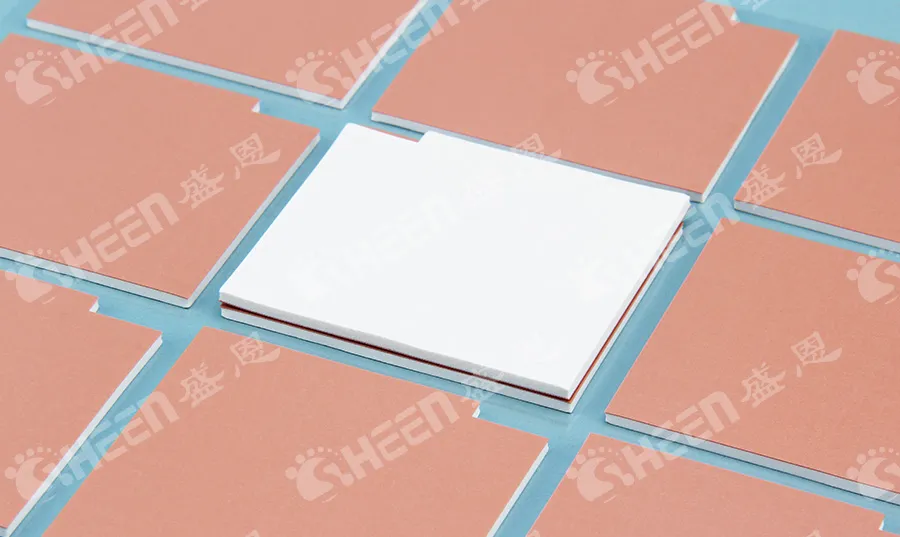The manufacturing of conductive silicone pads with silicone cloth backing is a precise process, with each step meticulously designed to enhance product performance and reliability. The selection of the silicone cloth is the crucial first step. Different types of silicone cloth are chosen based on specific application requirements, with fiberglass cloth and polyester cloth being common choices. Fiberglass cloth, renowned for its exceptional strength, high-temperature resistance, and excellent insulation properties, is the preferred choice for high-demand applications. Polyester cloth, on the other hand, with its lower cost and relatively smooth surface, finds its place in cost-sensitive applications. Regardless of the silicone cloth chosen, pre-treatment is an essential step. The purpose of pre-treatment is to enhance the adhesion between the silicone cloth and the silicone paste, ensuring robust lamination. Pre-treatment typically includes thorough cleaning of the silicone cloth surface to remove oil stains, dust, fiber impurities, etc., and sometimes involves applying surface treatment agents, such as primers, to further enhance surface activity. Some silicone cloths also require baking pre-drying after pre-treatment to remove moisture and prepare for the subsequent lamination process.
The preparation of the core silicone paste is the cornerstone of the conductive silicone pad's performance. The core competitiveness of high-performance conductive silicone pads lies in their silicone paste formulation. This requires careful selection of the base silicone and the incorporation of high-performance thermally conductive fillers. The choice of base silicone is usually based on performance requirements, with methyl silicone rubber and vinyl silicone rubber being common choices. The selection and treatment of thermally conductive fillers are even more critical, with aluminum oxide, aluminum nitride, magnesium oxide, boron nitride, and other high thermal conductivity fillers widely used to improve the thermal conductivity of silicone pads. The type, particle size, content, and surface treatment method of the filler all directly affect the thermal conductivity of the final product and the processing performance of the paste. To achieve ideal paste performance, various additives such as vulcanizing agents, coupling agents, dispersants, and plasticizers are also added to precisely adjust the paste's viscosity, vulcanization speed, mechanical strength, and thermal conductivity characteristics, optimizing the paste performance. The paste preparation process demands high uniformity, requiring the use of specialized equipment such as high-speed dispersers, planetary mixers, and even three-roll mills to ensure that the thermally conductive filler is evenly dispersed in the silicone matrix, avoiding agglomeration and ensuring the uniformity and stability of thermal conductivity. Vacuum degassing is also a crucial step in paste preparation, removing any air bubbles that may be present in the paste to prevent them from reducing thermal conductivity and product strength. Throughout the paste preparation process, viscosity control is consistently maintained to ensure that the paste viscosity is suitable for subsequent coating or calendering processes, guaranteeing smooth production and stable product quality.

The subsequent vulcanization process is the key step in imparting the final properties to the silicone pad. The choice of vulcanization method needs to be determined based on the vulcanization system and product characteristics of the silicone paste, with common methods such as hot air vulcanization, infrared vulcanization, and microwave vulcanization each having its own advantages. Precise control of vulcanization temperature and time is crucial. Insufficient vulcanization may result in inadequate silicone performance, while over-vulcanization may lead to increased material brittleness. Therefore, vulcanization parameters need to be precisely controlled to ensure that the silicone is fully vulcanized and achieves optimal mechanical and thermal conductivity properties. Uniformity of the vulcanization process is equally important, ensuring that the degree of vulcanization is consistent throughout all parts of the product to guarantee uniformity of performance. After vulcanization, post-treatment, such as post-vulcanization or cooling setting, is sometimes required to further stabilize product performance, remove volatile substances, and ensure the long-term reliability of the final product.
Finally, the cutting and forming process shapes the laminated and vulcanized silicone sheet into the final product form. According to specific customer requirements, the silicone pad will be precisely cut into the required sizes and shapes to meet the installation needs of different application scenarios. For silicone pads with complex shapes, die-cutting processes can ensure precise dimensions and neat edges, improving product assembly accuracy and heat dissipation efficiency. Burrs on the cut edges need to be removed to improve product aesthetics and safety, and also to avoid potential safety hazards.
To ensure the excellent quality of conductive silicone pads with silicone cloth backing, rigorous quality testing is carried out throughout the manufacturing process. A comprehensive series of testing items, including appearance inspection, dimensional inspection, thermal conductivity testing, mechanical performance testing, bond strength testing, and reliability testing, comprehensively ensures that the product meets stringent performance indicators and application requirements. It is these rigorous quality control steps that guarantee that every conductive silicone pad possesses excellent performance and reliability.
In summary, the manufacturing process of conductive silicone pads with silicone cloth backing is a complex and sophisticated system engineering endeavor integrating material science, precision manufacturing, and stringent quality control. Although the silicone cloth backing does not directly improve thermal conductivity, it acts like a skeleton, endowing the soft silicone pad with significantly enhanced mechanical strength, dimensional stability, and operational convenience, overcoming the inherent limitations of pure silicone materials and enabling it to better adapt to various complex application scenarios. It has become an indispensable key component of high-performance thermal interface materials. The combination of sophisticated processes and the ingenious application of silicone cloth has secured the important position of conductive silicone pads in the field of electronic device heat dissipation.

 English
English
 usheenthermal
usheenthermal



